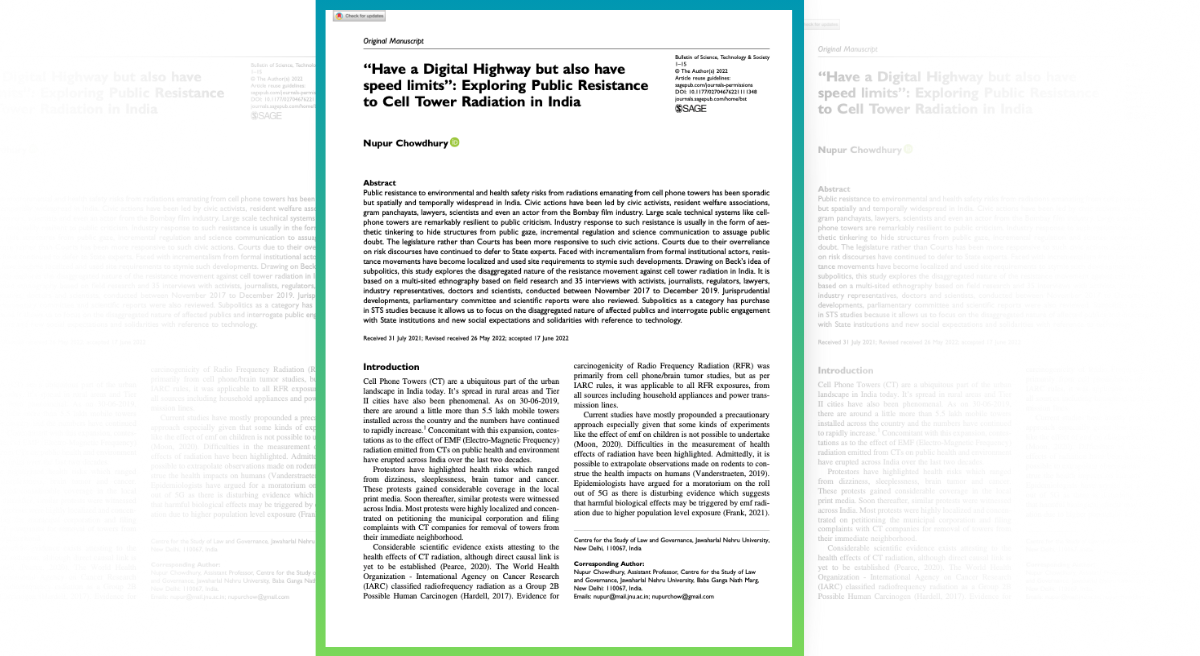“Have a Digital Highway but also Have Speed limits”: Exploring Public Resistance to Cell Tower Radiation in India
Public resistance to environmental and health safety risks from radiations emanating from cellphone towers has been sporadic but spatially and temporally widespread in India. Civic actions have been led by civic activists, resident welfare associations, gram panchayats, lawyers, scientists and even an actor from the Bombay film industry. Large scale technical systems like cellphone towers are remarkably resilient to public criticism. Industry response to such resistance is usually in the form of aesthetic tinkering to hide structures from public gaze, incremental regulation and science communication to assuage public doubt. The legislature, rather than Courts, has been more responsive to such civic actions. Courts due to their overreliance on risk discourses have continued to defer to State experts. Faced with incrementalism from formal institutional actors, resistance movements have become localized and used site requirements to stymie such developments. Drawing on Beck’s idea of sub-politics, this study explores the disaggregated nature of the resistance movement against cell tower radiation in India. It is based on a multi-sited ethnography based on field research and 35 interviews with activists, journalists, regulators, lawyers, industry representatives, doctors and scientists, conducted between November 2017 to December 2019. Jurisprudential developments, parliamentary committee and scientific reports were also reviewed. Sub-politics as a category has purchase in STS studies because it allows us to focus on the disaggregated nature of affected publics and interrogate public engagement with State institutions and new social expectations and solidarities with reference to technology.
